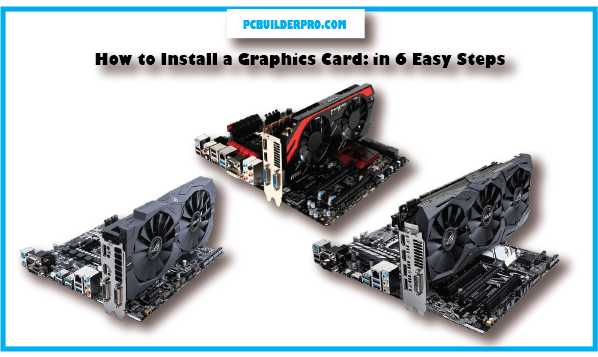Upgrade your computer’s visual game with a new graphics card! Think of your computer as a chef, ready to whip up tasks, but without a good graphics card, it’s like gourmet meals on a paper plate. You’re missing out
on all the flavors and fancy garnishes! To install a Graphics Card is like giving your computer a VIP ticket to the visual party, transforming it from a jalopy to a high-speed sports car. Games become jaw-dropping,
videos play smoother than jazz, and your computer goes from a flip phone to a smartphone. Don’t worry if you’re unsure how to do it. This guide is your trusty GPS, leading you through every step.
Things To Consider Before Installing a GPU
Absolutely, let’s take a moment to ponder the key considerations before embarking on the thrilling GPU installation journey. Picture this: we’re in a virtual café, sipping our tech-savvy lattes, and discussing these
crucial factors over a digital menu. Each item on this menu is like a course in a fine dining experience, and we’re about to savor them one by one. Take a seat, and let’s explore these essential considerations:
| Consideration | Make sure your GPU and motherboard are a compatible |
|---|---|
| Compatibility | Make sure your GPU and motherboard are Supported |
| Power Supply | Check if your power supply can handle the extra load from the new GPU. |
| Physical Space | Check Your PC Canbinet have enough space inside to Get Fit in |
| Driver Updates | Are your GPU drivers up to date? This can mean the difference between smooth sailing and choppy waters. |
| Cooling Solutions | Keep your GPU cool – explore options like fans or aftermarket coolers. |
| Monitor Compatibility | Make Sure your GPU and MONITOR are Supported |
| Performance Goals | What do you want your GPU to do? Gaming, video editing, or just everyday tasks? Set your goals! |
1. Compatibility Check
Before you even think about installing a new GPU, ensure that it’s compatible with your existing hardware. Like a chef matching ingredients, you need to see if your motherboard, power supply, and case can
accommodate the new graphics card. Imagine trying to bake a cake without the right ingredients – it won’t turn out well!
2. Power Supply Wattage Support
Ah, the heartiest part of our tech meal! You must confirm if your power supply unit (PSU) can handle the additional power demands of your shiny new GPU.
Think of this as checking if your oven can handle that massive turkey for Thanksgiving. An inadequate PSU might lead to instability or crashes.
3. Physical Space
Just as you wouldn’t try to stuff a Thanksgiving feast into a tiny kitchen, don’t attempt to cram a massive GPU into a small case without checking the dimensions first.
Measure twice, install once! Ensure your case has enough room to house the new graphics card comfortably.
4. Driver and Software Awareness
Like the cherry on top of a delicious dessert, having the right drivers and software is crucial. Check if you need to download specific drivers for your GPU,
and be aware of any software updates that might be required for compatibility. Neglecting this step is like forgetting the icing on the cake – it just won’t taste as sweet.
5. Cooling Considerations
Your GPU can get as hot as a steaming cup of coffee, so consider your system’s cooling capabilities. If your PC runs hotter than a summer day in the desert,
think about improving airflow or investing in extra cooling solutions. A cool GPU is a happy GPU.
6. Budgeting and Future-Proofing
Just as you wouldn’t order a bottle of vintage wine without checking your wallet, consider your budget and future needs.
Think about how this GPU fits into your overall system upgrade plan. Investing wisely now can save you from future headaches.
7. Game and Usage Requirements
Different GPUs cater to different needs. Are you gaming? Editing videos? Running machine learning models? Choose a GPU that suits your specific requirements.
Ordering the daily special at a restaurant is only satisfying if it’s what you’re hungry for!
So, there you have it, our tech-savvy café menu of considerations before installing a GPU. Take your time to digest these tidbits, and when you’re ready,
you can proceed with confidence, knowing you’ve prepared for a smooth GPU installation adventure!
Now that you’ve peeked at the menu, let’s dig into each dish, one by one. It’s like preparing for a grand feast; the more you plan, the more satisfying the outcome! 🍽️👾
How To Install Graphics Card? [Step-by-Step Guide]
Please follow these step-by-step Guide to install your new graphic card
Step 1: Gather Your Tools
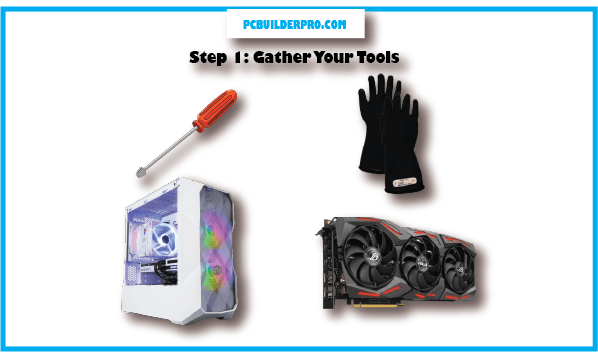
Before we get started, make sure you’ve got everything you need:
| Tools and Parts | Why You Need Them |
|---|---|
| New Graphics Card 🎮 | That’s what we’re installing! |
| Screwdriver 🛠️ | To unscrew the old one. |
| Anti-static Wristband ⚡ | Keeps static electricity away. |
| Your Computer 🖥️ | This is where it all happens. |
Step 2: Remove the old Graphic Card
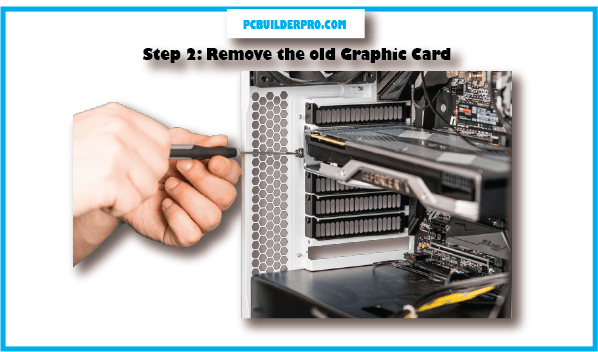
Okay, now it’s time to send the old graphics card into retirement. Tell it, “Thanks for the memories!” But we need to remove it gently:
- Shut down your computer and unplug it.
- Open the computer case. It’s like opening a treasure chest! Careful not to wake any dust bunnies.
- Find the old graphics card, usually sitting in a slot on the motherboard. It’s got cables connected to it; carefully unplug them.
- Use your trusty screwdriver to unscrew the old card if it’s held in place.
Step 3: Install New Graphic Card
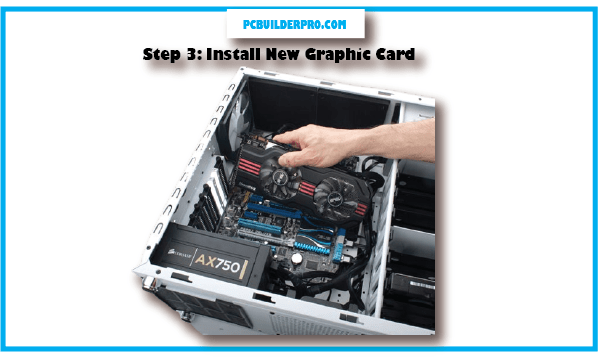
Now, here’s the fun part—getting your new graphics card ready to shine:
- Take your new graphics card out of its box. It’s like a tiny superhero waiting to save the day!
- Check if it fits in the same slot where the old one was. If it’s too big, it’s time to call the store and say, “Houston, we have a problem.”
- Carefully push the new card into the slot, making sure it’s snug. Don’t force it; it should slide in like a puzzle piece.
Step 4: Close The Pc Cabinet
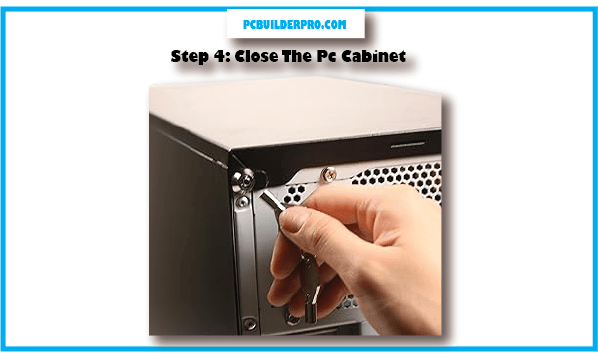
Time to secure your new buddy in place:
- Use your screwdriver to fasten the new graphics card to the case. Tighten it just enough, like a goodnight hug.
- Plug any cables back into the new graphics card, like power cables and monitor cables.
Step 5: Power On
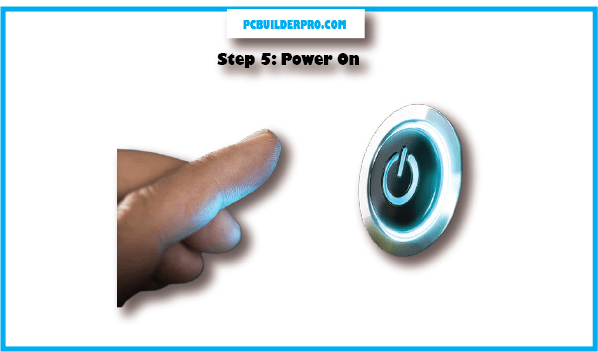
Now, let’s wake up your computer and see if everything’s working:
- Plug in your computer and turn it on. Fingers crossed for no fireworks!
- If your computer starts up without any weird beeps or error messages, hooray! You did it! If not, it’s time to ask a grown-up for help.
Step 6: Install Drivers
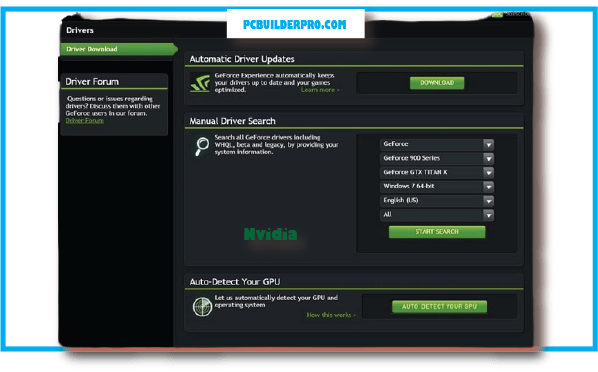

Last but not least, your new graphics card needs some special software to work its magic:
- Visit the website of the graphics card maker (NVIDIA or AMD).
- Find and download the drivers for your specific graphics card model.
- Install the drivers, and your computer will understand your new graphics card better than ever before.
That’s it, kiddo! You’ve successfully installed a graphics card on your computer. Now you can enjoy super-duper HD gaming and crystal-clear videos. You’re officially a tech wizard! 🪄🌟🎮
What To Do After Installing A New Graphics Card
Congratulations on leaping into the world of upgraded graphics with your shiny new graphics card! It’s like giving your computer a turbo boost for gaming and graphical tasks. Now, let’s get you on the right track to harnessing its full power.
| Step | Action | Notes |
|---|---|---|
| 1 | Uninstall Old Drivers | First, we say “RIP” to your old graphics card drivers using a tool called Display Driver Uninstaller (DDU). It’s like a breakup, but for tech. |
| 2 | Install New Drivers | Head over to your graphics card manufacturer’s website (Nvidia or AMD) and snag those fresh drivers. Install them like a digital boss following the manufacturer’s instructions. |
| 3 | Give Your OS Some Love | Let’s not forget your loyal operating system. Go to the Settings app, click on “Update & Security,” and hit “Check for updates.” It’s like giving your OS a spa day. |
| 4 | Benchmarking Test | It’s time for the fun part! Benchmark your graphics card using tools like 3DMark and FurMark. See how it flexes its muscles in the virtual gym. |
| 5 | Customize Your Card’s Swagger | Tweak your graphics card settings like a pro. The control panel software from your card’s manufacturer is your playground for achieving that pixel-perfect performance. |
| 6 | Test Your Games or Work | Fire up your favorite games and applications. It’s like taking your new sports car for a spin on the racetrack. Enjoy the silky-smooth graphics and revel in your newfound power. |
Bonus Tips For you
Now, here are some extra tips to supercharge your graphics card experience:
- Ensure your power supply can handle your new card. You don’t want it throwing a tantrum mid-game.
- Stay vigilant with driver updates. Those software wizards are always cooking up something new.
- Feeling adventurous? Consider overclocking your graphics card for that extra oomph. Just remember, with great power comes great responsibility (and maybe a few fried pixels).
- Prevent the dreaded GPU sag with a sag bracket. It’s like giving your card a little invisible spine support.
If, by chance, you encounter any hiccups or glitches along the way, don’t hesitate to consult your card’s manual or reach out to the manufacturer’s support. They’re there to rescue you from the digital abyss.
So, there you have it – your graphics card journey from zero to hero! Enjoy your newfound graphical glory, and may your frame rates be high and your temperatures low. Happy gaming! 🎮💥
What happens if The Power Supply is not enough for the Graphics Card?
So now here are the Problems that you can face when the power supply is not enough for your graphic card you may encounter these issues how you can solve them and what you should do
1. Signs Your Graphics Card is Power-Hungry:
Computer Drama: Picture your PC as a diva, crashing or freezing when the going gets tough. Why? Because the graphics card isn’t getting its power fix.
Artistic Flair: Your screen turns into a Picasso canvas with flickering, tearing, and distortions – all thanks to a power supply hiccup.
Frame Rate Blues: Your once-smooth gameplay feels like a stuttering sloth. Blame the power shortage for the sluggish performance.
Hot Potato Card: If your graphics card was a potato, it would be overcooked. Overheating becomes the name of the game.
Total Blackout: In a worst-case scenario, your power supply might decide to retire, dragging other PC parts into the abyss.
2. Problem With Unsupported Power Supply:
- Your computer goes on strike, demanding attention like a petulant toddler.
- Gaming feels like a pixelated Renaissance painting – it’s not a feature; it’s a bug!
- Your once-zealous graphics card ages faster than a melting snowman.
- Your wallet reluctantly coughs up cash for unplanned PC CPR.
3. Finding Your Power Supply Perfect Match:
- Doing the Math: Use an online power calculator to discover how many watts your system craves. Think of it as feeding your hungry pet goldfish.
- Wattage Wizardry: Make sure your power supply flexes enough muscle for your graphics card and its squad. Size does matter here!
- Modular Magic: Consider a modular power supply for cable management nirvana. Your PC will look tidier than a Marie Kondo closet.
- Silence, Please: Opt for a power supply with fans quieter than a library during nap time. No need for PC-induced tinnitus!
4. Efficiency Power Supply:
- Go for a power supply with a high-efficiency rating (look for those Bronze, Silver, Gold, or Platinum badges). It’s like picking a car with a frugal gas consumption.
- An efficient power supply not only saves energy but keeps your PC cooler than the other side of the pillow. Mother Nature and your CPU will thank you!
5. Good brands Power Supply :
- Stick with legendary brands like Corsair, EVGA, Seasonic, and Thermaltake. Your PC deserves a power supply with street cred, not a sketchy pawnshop find.
6. Testing the Power Upgrade :
- After the upgrade, put your system through its paces. Ensure your graphics card is strutting its stuff, and your PC is more stable than a well-trained circus act.
So here are the Facts Don’t let your power supply play hide and seek with your graphics card. It’s time to invest in a reliable partner. If your power supply isn’t up to the task, you’ll endure a comedy of errors,
from PC tantrums to pixelated mishaps. So, choose wisely, and let your PC bask in the glory of a harmonious power supply relationship. Your frame rates will thank you!
How to fix the installed new graphics card computer Won’t boot?
Picture this: you just got your hands on a shiny new graphics card, and your computer is supposed to be soaring through the digital skies. But instead,
it’s refusing to even boot up. Fear not, because we’re about to turn this tech tragedy into a comedy of solutions!
fix the installed new graphics card Table:
| Problem | Possible Solution |
|---|---|
| The computer won’t boot after the GPU upgrade | |
| 1. Check your power supply | – Ensure your power supply has enough oomph for |
| your graphics card using a handy online calculator. | |
| 2. Check your graphics card installation | – Install the new card correctly in the PCIe slot, |
| plug in all power connectors, and bid adieu to the | |
| old graphics card if it’s still hanging around. | |
| 3. Reset your CMOS | – Give your CMOS a reset; it’s like a tech reboot |
| for your computer. Check the motherboard’s manual | |
| for specific instructions, if needed. | |
| 4. Update your BIOS | – Don’t let your BIOS be a blast from the past. |
| Consult the motherboard’s manual for a snazzy update. | |
| 5. Try a different graphics card | – Swap in another card if all else fails. Sometimes, |
| the new one might be camera-shy. | |
So, your computer’s throwing a problem after a graphics card upgrade? Don’t worry; we’ve got a comedy of solutions for you.
- The Power Play: Is your power supply feeling as strong as a superhero, or more like a sidekick in need of spinach? Check its wattage with an online calculator. We don’t want your PC to have a power struggle.
- Card in the Right Place: Make sure your new graphics card isn’t playing hide-and-seek in the PCIe slot. And don’t forget to say goodbye to the old card – it’s time to retire!
- CMOS Comedy: Resetting your CMOS can be like hitting the reset button on your computer’s life. Find your motherboard’s manual for the CMOS reset dance steps.
- BIOS Bonanza: If your BIOS is living in the past, it’s time to bring it to the present. Check your motherboard’s manual for a BIOS update party.
- Card Swap Shenanigans: If all else fails, try a different graphics card. Maybe the new one just wants some alone time.
Additional Solutions To FIX
- Double-check your monitor’s plugged into the right port – no sneaking into the motherboard’s turf!
- Boot in Safe Mode (F8 key) and try uninstalling and reinstalling graphics card drivers. Computers sometimes need a driver’s ed refresher.
- Give a different operating system a whirl. If it boots from a USB drive, your computer’s got commitment issues with the current OS.
So there you have it – troubleshooting your computer’s boot blues with a side of tech humor. Don’t let a finicky graphics card steal the show.
With a little laughter and these solutions up your sleeve, your computer will be back on its feet in no time, ready for its next digital adventure!
5 Ways To Do GPU Testing
You’ve just welcomed a brand new Graphics Processing Unit (GPU) into your PC, and you’re eager to make sure it’s snug and ready to boost your computer’s performance.
Let’s take a simple and clear look at how to double-check that your new GPU is indeed sitting comfortably inside your PC.
Step 1: Look Inside Your PC
Imagine your PC is like a treasure chest, and the GPU is the treasure. Open it up and take a look to make sure the treasure (your new GPU) is in the right place.
- Open your computer case or tower.
- Look for your GPU. It’s usually a flat, rectangular thing plugged into a slot on your motherboard.
- Gently press on the GPU to make sure it’s firmly in place. Think of it as a puzzle piece fitting snugly.
Step 2: Driver Detective Work
Drivers are like translators between your GPU and your computer. They help them talk to each other properly. Let’s make sure these translators are on the job.
- Visit the website of the GPU maker (NVIDIA or AMD).
- Find the drivers for your specific GPU model.
- Download and install these drivers. It’s like giving your GPU a special handshake.
Step 3: Look at BIOS
The BIOS is like your PC’s secret menu. Sometimes, you need to tell it to use your new GPU instead of the old one (if you have one).
- Restart your PC and, during startup, press Del or F2 (usually) to access BIOS settings.
- Look for something like “Primary Display Adapter” or “Initial Display Output.”
- Make sure it’s set to “PCIe” or the slot where your GPU is chilling.
Step 4: Monitor Check
Your monitor needs to know it should look at the new GPU, not the old one.
- Check that your monitor is plugged into one of the ports on your new GPU, not the motherboard. It’s like telling your monitor where the party is.
Step 5: Device Manager Panel
Your PC keeps a list of all its parts in a place called “Device Manager.” Let’s make sure it knows about your new GPU.
- Right-click on the Start button.
- Choose “Device Manager.”
- Look under “Display adapters.” Your new GPU should be listed there without any error symbols.
So checking if your new GPU is properly installed doesn’t require a detective’s skills. Just peek inside your PC, make sure the drivers are good, give BIOS a gentle nudge, check your monitor connection, and confirm in
Device Manager. If everything looks okay, you’re all set for smoother gaming and computing with your new GPU onboard. Enjoy!
Graphics Card Power Supply Requirements Lists
recommended power supply wattage for various graphics cards, along with a touch of humor:
| Graphic Card | Power Supply (Wattage) | Reason Why You Need |
|---|---|---|
| NVIDIA GeForce RTX 4090 | 1000W | “For when you need a power plant, not just a power supply.” |
| NVIDIA GeForce RTX 4080 Ti | 850W | “To illuminate your gaming world, and maybe your entire neighborhood.” |
| NVIDIA GeForce RTX 4080 | 750W | “Because gaming should be lit, but not literally.” |
| NVIDIA GeForce RTX 4070 Ti | 700W | “When your GPU craves power, but you also crave efficiency.” |
| NVIDIA GeForce RTX 4070 | 650W | “Balancing power and budget – it’s like a see-saw for your PC.” |
| AMD Radeon RX 7900 XTX | 1000W | “When your PC doubles as a space heater.” |
| AMD Radeon RX 7900 XT | 850W | “The GPU equivalent of strapping a rocket to your PC.” |
| AMD Radeon RX 7800 XT | 750W | “For those who believe in XTreme gaming experiences.” |
| AMD Radeon RX 7800 | 700W | “When your PC dreams of becoming a gaming powerhouse.” |
| AMD Radeon RX 7700 XT | 650W | “Because playing it safe is for single-player games.” |
| NVIDIA GeForce RTX 4060 Ti | 600W | “For the budget-conscious gamer who still wants a taste of the Ti.” |
| NVIDIA GeForce RTX 4060 | 550W | “When your PC prefers smooth performance without the frills.” |
| AMD Radeon RX 7600 XT | 500W | “For those who game on the edge, but not too close to it.” |
| AMD Radeon RX 7600 | 450W | “When gaming is a hobby, not a lifestyle.” |
| NVIDIA GeForce RTX 4050 Ti | 400W | “Because even budget PCs deserve some Ti time.” |
| NVIDIA GeForce RTX 4050 | 350W | “For the casual gamer who occasionally ventures into the virtual realm.” |
| AMD Radeon RX 7500 XT | 300W | “When your GPU sips power like a fine wine.” |
| AMD Radeon RX 7500 | 250W | “Because gaming on a budget is an art form.” |
| Graphic Card | Power Supply (Wattage) | Reason Why You Need |
|---|---|---|
| NVIDIA GeForce RTX 3090 Ti | 1000W | “When you want a GPU that demands more respect than the CEO.” |
| NVIDIA GeForce RTX 3090 | 850W | “For those who like to keep their gaming PCs in beast mode.” |
| NVIDIA GeForce RTX 3080 Ti | 850W | “When you need Ti-level performance but don’t want to break the bank.” |
| NVIDIA GeForce RTX 3080 | 750W | “Because frames per second should be higher than your power bill.” |
| NVIDIA GeForce RTX 3070 Ti | 700W | “When your GPU is serious business, but not ‘tuxedo and monocle’ serious.” |
| NVIDIA GeForce RTX 3070 | 650W | “Because a good gaming experience is like a fine wine – it gets better with power.” |
| NVIDIA GeForce RTX 3060 Ti | 600W | “When you want a GPU that’s the ‘Goldilocks’ of the Ti series.” |
| NVIDIA GeForce RTX 3060 | 550W | “For the budget-conscious gamer who still dreams of ray tracing.” |
| NVIDIA GeForce RTX 3050 Ti | 500W | “When you want to Ti it up a notch without going overboard.” |
| NVIDIA GeForce RTX 3050 | 450W | “For the GPU enthusiast who believes less is more, but not too much more.” |
And here’s the continuation of the table:
| Graphic Card | Power Supply (Wattage) | Reason Why You Need |
|---|---|---|
| AMD Radeon RX 6950 XT | 850W | “When you need power that matches your gaming ambitions.” |
| AMD Radeon RX 6900 XT | 850W | “For those who want to XTend their gaming adventures.” |
| AMD Radeon RX 6800 XT | 750W | “When you need XTreme performance for your virtual conquests.” |
| AMD Radeon RX 6700 XT | 650W | “Because XTasy comes in a smaller package.” |
| AMD Radeon RX 6600 XT | 550W | “When you want XTra frames without the XTra power bill.” |
| AMD Radeon RX 6600 | 500W | “For those who want to extend their gaming adventures.” |
| AMD Radeon RX 6500 XT | 450W | “When you want an XTra-small GPU with XTra-big possibilities.” |
| Graphic Card | Power Supply (Wattage) | Reason Why You Need |
|---|---|---|
| NVIDIA GeForce GTX 1660 Super | 450W | “When you want ‘super’ gaming without the ‘super’ power bill.” |
| NVIDIA GeForce GTX 1660 | 400W | “Because GTX doesn’t always mean ‘gargantuan.'” |
| NVIDIA GeForce GTX 1650 Super | 350W | “When you want ‘super’ gaming without the ‘superpower bill.” |
| NVIDIA GeForce GTX 1650 | 300W | “Because even modest GPUs need love (and power).” |
| Graphic Card | Power Supply (Wattage) | Reason Why You Need |
|---|---|---|
| AMD Radeon RX 5700 XT | 650W | “When you’re extremely serious about gaming but not about power bills.” |
| AMD Radeon RX 5700 | 550W | “Because the RX 5700 is your ticket to Radeon happiness.” |
| AMD Radeon RX 5600 XT | 500W | “When you need ‘XTra’ performance without the ‘XTra’ fuss.” |
| AMD Radeon RX 5500 XT | 450W | “Because even entry-level gaming deserves a decent power supply.” |
Remember, these power supply recommendations are just guidelines, and your actual power requirements may vary depending on your entire system configuration. Always
consult your component specifications and use a reliable power supply calculator for precise wattage needs.
Enjoy your gaming adventures and may your power bills be as epic as your victories!
Is it time to get a new graphics card? How do I know if I need a better graphics card?
Think about getting a new graphics card if your games are not running smoothly if you can’t set your games to look their best on your screen, or if the images in your games are
not clear or have weird colors and shapes. If you don’t have these problems, you might not need a new card just yet.
What graphics card is right for my computer?
The right graphics card for your computer depends on the type of slot your motherboard has and how much power your computer can provide. Make sure the new card fits in the
slot and that your computer can supply enough electricity to power it. You can find out what you need on the websites of the companies that make the cards and computers.
How much electricity does a new graphics card use? Is my computer’s power supply strong enough?
New graphics cards can use a lot of electricity. Check how much power the card needs and see if your computer’s power supply has enough power to handle it. It’s best if your
computer can give more power than the card needs.
I’m scared of breaking my computer. How careful should I be?
Be very careful! Touch everything gently, especially the parts that have circuits and wires. Take your time and make sure you’re doing everything right.
What tools do I need to put in the graphics card?
Most likely, you’ll just need a simple screwdriver to open your computer and take out any screws that are holding the old card.
How do I open my computer case without causing damage?
Your computer case might have special screws that you can open with your hands, or it might have regular screws that need a screwdriver. After you remove the screws, you can take the side off carefully.
What does the PCI-e slot look like on the motherboard? How can I find the PCI-e slot?
The PCI-e slot is a long, narrow space on the motherboard with something to hold the card in place at one end. It’s usually the biggest space and will have a label or a picture to show
you where to put the graphics card.
How hard do I need to push to get the graphics card in?
You should push the graphics card in firmly but gently. If it’s not going in, don’t force it. Make sure it’s lined up right and nothing is blocking it.
Will the new graphics card fit inside my computer? How can I make sure?
Graphics cards come in different sizes. Look at the size of the card you want and make sure it will fit inside your computer. You can find the size of your computer on the website or
manual of the company that made it.
Should I take out the old graphics card before putting in the new one?
Yes, if you already have a graphics card, you need to take it out before you can put in the new one. You’ll have to unscrew it and unhook it from the slot on the motherboard.
How do I hook up the power cables to the new graphics card?
Graphics cards need extra power, so they have special slots for cables from your power supply. Check the manual that comes
with your graphics card to see which cables to use and how to connect them.
Where do I put the screws to keep the graphics card in place?
Your graphics card will have holes that match up with holes in your computer case. Use screws to make sure the card stays put and doesn’t move around.
Should I get new software for my graphics card?
Absolutely! New software, called drivers, helps your graphics card work right and gives you the best performance.
How do I put new drivers on my graphics card?
You can download the latest drivers from the website of the company that made your graphics card. Look for your card model on their site and follow the steps they give you.
How can I check if my new graphics card is working right?
After putting in the new drivers, restart your computer. Then, you can use a program that tests how well your graphics card works or try playing a game.
What do I do with my old graphics card?
If it still works, you could sell it or keep it as a spare. If it’s broken, you might be able to recycle it.
Is it possible to recycle my old graphics card?
Yes, you can recycle it because it has materials that shouldn’t go in the regular trash. Ask your local recycling place if they take old electronics.
What if my computer won’t start after I put in the graphics card?
Make sure the graphics card and all the cables are in the right place. Also, check that your screen is connected to the new card, not the motherboard.
My computer is on, but nothing shows up on the screen. What’s wrong?
A few things could be the problem. Make sure your screen is connected to the new card and that it’s on. You might also need to put the card and cables back in to make sure
they’re right. If you were using built-in graphics before, you may need to turn them off in your computer’s settings.
I installed the new drivers, but my games don’t look or play any better. Why?
Make sure you have the right drivers for your card and that they’re installed correctly. Also, look at your game settings to make sure they’re set to use the new card.
Conclusion
Congratulations, tech-savvy superstar! You’ve just learned how to install a graphics card in your computer.
It’s like giving your computer superhero vision. Now you can enjoy awesome gaming and super clear videos.
Remember, be careful and patient while handling your computer’s insides. If you ever get stuck or things don’t go as planned,
don’t hesitate to ask a grown up for help. Safety first!
FAQs
What if my new graphics card doesn’t fit in the slot?
No worries! Sometimes, graphics cards come in different sizes. If it’s too big, you might need to exchange it for a smaller one that fits your computer.
Why do I need an anti-static wristband?
Great question! It’s like wearing a tiny shield to protect your computer parts from static electricity. Static can be like a tiny lightning bolt that’s not so friendly to your computer’s insides.
Can I install a graphics card on a laptop?
Unfortunately, most laptops don’t allow you to upgrade the graphics card because they’re usually soldered onto the motherboard. But you can always get an external GPU if you want better graphics for gaming on a laptop.
What if my computer doesn’t start up after installing the new graphics card?
Don’t panic! It might be a compatibility issue or something else. Ask a grown-up for help, and they can troubleshoot the problem with you.
How often do I need to update the graphics card drivers?
It’s a good idea to check for driver updates every few months or when you notice a specific problem. Updated drivers can make your graphics card work better and play nicely with your computer.

